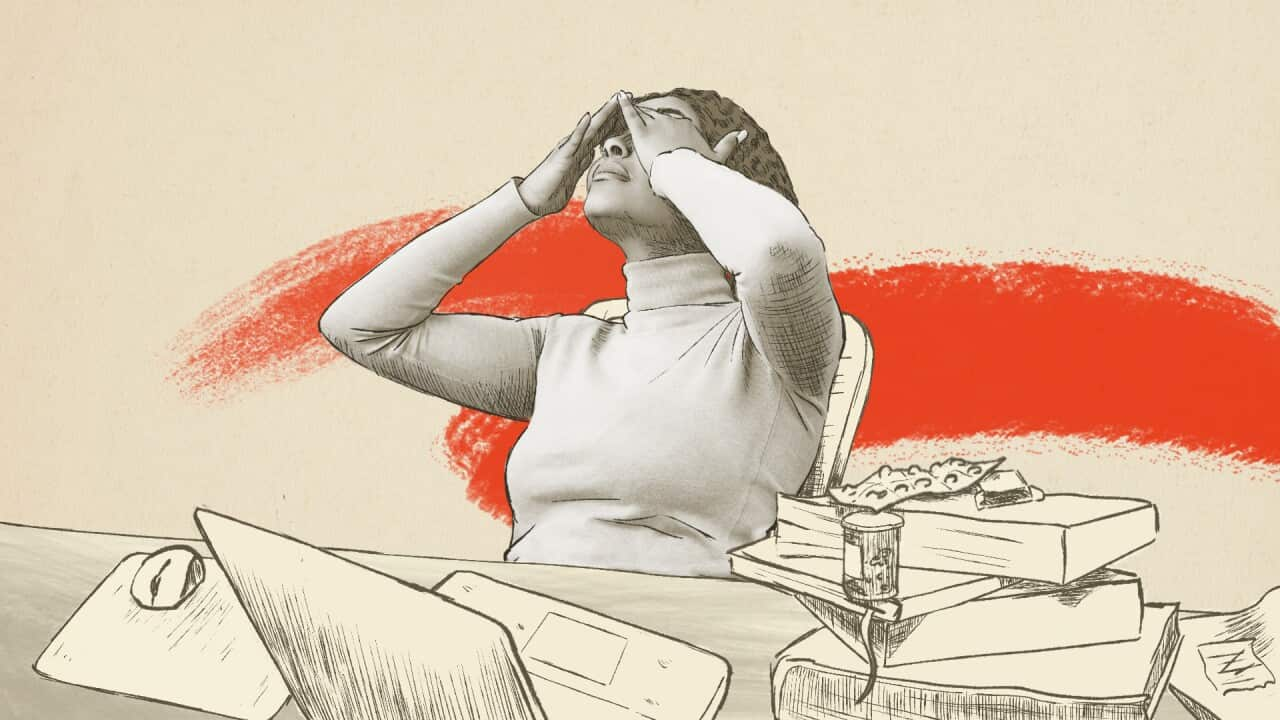Jasmine (not her real name) was forced to quit her previous job at a government agency in rural Queensland when she started to be excluded by her team leader.
The 39-year-old said the treatment started after she disclosed her narcolepsy and chronic pain, and requested to work from home to manage her condition.
“There was a definite negative shift towards me by that team leader after I disclosed (my condition) and a sense of unhappiness from them about my ability to work from home,” she said.
Jasmine said that included being ignored in meetings, phone calls not being returned, emails or suggestions being dismissed, and not being communicated important information or changes.
She lasted a few months before “the treatment of being excluded got too much”.
“It got to a point sometimes where I would just sit there and cry,” Jasmine said.
“I didn’t want to become this bitter, angry person because one person was excluding me or making me feel (as though) my contribution wasn’t important”.
‘Stigma for their working from home condition’
The number of people working from home has increased substantially, particularly following the COVID-19 pandemic.
About 40 per cent of people worked from home between September 2020 and June 2021 and just under 37 per cent of people in 2023, according to data from the Australian Bureau of Statistics.
were what the majority of people cited as the main reason for working from home in 2023.
Despite this increasingly normalised trend, some women with chronic pain are reporting being discriminated against as a result of this flexible work arrangement to manage their condition.
Researchers from Melbourne University and Western Sydney are working on a new report examining the relationship between working from home and evolving family and social relations and wellbeing, for which Jasmine was interviewed.
Dr Elisabetta Crovara is a postdoctoral research fellow at the University of Melbourne and is a co-author of a submission made by the researchers to the Victorian women’s pain inquiry.
During this research, which involved surveying 500 people across Australia, Crovara said they stumbled across an unexpected finding, which prompted their submission to the pain inquiry.
“Although the survey wasn’t specifically looking to hear from workers living with chronic pain, quite a number of respondents reported that working from home is crucial to managing their chronic health conditions,” Crovara said.
All of the people who flagged a chronic health condition were women, leading Crovara and her team to interview eight of the 12 women between February and March this year.
She said the interviews revealed long histories of medical gender bias, misdiagnosis and having their pain dismissed by health professionals — all of which affected their career choices and experiences at work.
“What emerged from these interviews is that working from home is still an exception,” Crovara said. “Because of that, some of the women we spoke to experience a stigma for their working from home condition, even though working from home for them is absolutely crucial to manage their chronic pain conditions.”
Dr Elisabetta Crovara has interviewed women who reveal confronting bias and discrimination as a result of flexible working arrangements to manage chronic pain. Credit: SBS
Millions live with chronic pain
At least 3.2 million Australians are living with chronic pain, according to 2018 estimates from a Deloitte and Painaustralia report into the costs of pain in Australia.
More than half of those suffering are women and 68 per cent are of working age.
Chronic Pain Australia’s 2024 report, which included those aged 18 years and older, found 3.6 million Australians live with chronic pain.
Fiona Hodson, vice chairperson of Chronic Pain Australia, said there is typically under-reporting of chronic pain as it encompasses many varying health conditions.
Hodson, a clinical nurse with over 20 years of experience in chronic pain, said people with chronic pain certainly encounter stigma in their workplace.
“The biggest one that keeps coming up time and time again is the stigma and not feeling believed by their co-workers,” Hodson said. “They do miss days of work because of their chronic pain but they just don’t feel like people actually understand them.”
Nearly half of women report stigma from health professionals regarding their chronic pain, according to a 2024 report by Chronic Pain Australia. It also found that women and non-binary respondents face even longer delays in diagnosis, with nearly half of women and almost 60 per cent of non-binary respondents waiting more than three years.
This aligns with reports of health bias revealed in , as well as the End Gender Bias survey conducted by the federal government.
One in five people surveyed in the Chronic Pain report said they experienced stigma from their employers or colleagues, while just under 45 per cent (44.9 per cent) of survey respondents have had to stop working because of their pain, and almost 30 per cent have had to limit their hours.
Lily’s (not her real name) chronic pain stems from a physical disability called hypertonia, as well as generalised hypermobility syndrome, which means she’s unable to drive.
But she said despite management and senior colleagues being aware of her condition, she still encountered pushback against flexible working arrangements.
“I did have a manager who would get annoyed at me pretty regularly that I couldn’t get into the office before 9.30am,” Lily said. “In the end, she was so annoyed about it what I did was I went through Google Maps and I printed out what times I could be at such and such; and what my commute actually looks like.”
The manager eventually became more reasonable with working from home adjustment, but Lily said she felt “really frustrated” by the efforts she had to take to prove she was telling the truth.
“It made me feel like I had no control over my life,” she said. “I can’t get the kids up earlier, I can’t drive, I can’t make any of those things happen faster than they are.”
Lily currently works as a project manager at a large company where the HR team is predominantly staffed by women, many of whom work from home and are mothers to small children.
She believes all workplaces should adopt a similar flexible work culture, rather than enforcing a rigid 9 to 5 structure.
“Organisations who are thinking in an old-fashioned way, they’re not going to get the best people,” Lily said. “Not only is it bad for Australia because capable people are being held back, but it’s bad for businesses.”
Crovara said while the women noted a greater normalisation of working from home post the COVID-19 pandemic, there are still inadequate policies in place to prevent bias and discrimination against those using flexible work arrangements to manage chronic pain.
“Some of the women we spoke to said that before COVID-19, it was really hard to get flexible working arrangements and they had to go to the office,” Crovara said.
“They described those experiences as exhausting — they had to self-medicate, push through pain.
“Right now there’s not policy or legislation very clear around working from home yet; so it’s very much in the hands of the organisation.”
A spokesperson from the Department of Employment and Workplace Relations told SBS News that the federal government’s Secure Jobs, Better Pay amendment to the Fair Work Act provides eligible employees with an enforceable right to request flexible working arrangements, and also makes gender equality an objective of the Act.
The spokesperson said the Fair Work Commission was also considering a that covers employees who mainly carry out clerical and administrative work in the private sector.
Jasmine said the current government agency she works for is ideal in its flexible approach, and she hasn’t encountered any issues with booking out time for appointments or working from home.
“It’s just been fantastic to have that trust as soon as you start of, ‘Okay, we’re all adults, let’s just get on with it’,” she said.
“That feeling of appreciation of the work that you are doing means so much after that bad experience.”
To hear more stories like this one, listen to our latest SBS News podcast series .




